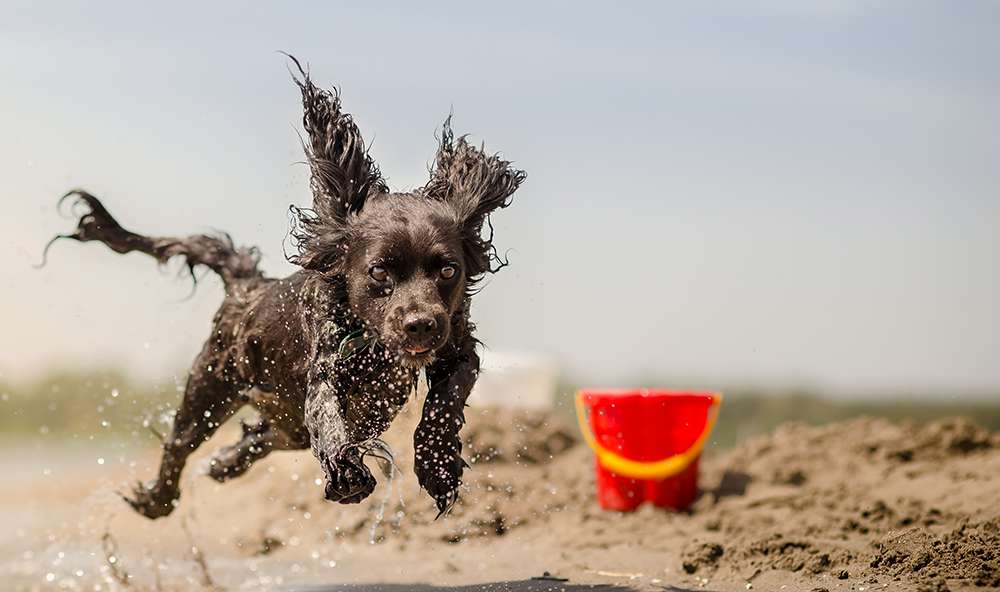
And you know, they have a point!
What happens in situations when training treats don’t work?
When you call your puppy and he wants to play with his new friends more than he wants the piece of cheese in your hand?”
What do you do when your dog is chasing a rabbit through the grass or pursuing a seagull across the beach?
How much use is waving your piece of roast chicken around going to be then?
What I want to do in this article is answer your concerns about the use of treats in dog training, and explain exactly what you will need to do, in situations where food does not appear to work. We’ll go into that below.
Clearing up the confusion about dog training with food
There is a huge amount of confusion over the use of food in dog training. And a common assumption that ‘positive training’ is permissive training.
Positive trainers are often seen as bunny-hugging softies that are afraid to say ‘no’ and discipline their dogs.
And there is a general assumption that dogs raised in this way are likely to be spoiled and badly behaved.
I think that these assumptions are entirely understandable. They are also flawed and if you’ll bear with me, I will explain why.
Dog training methods: definitions and evidence
Many of the discussions that I see taking place around this topic are filled with people talking at cross purposes. Simply because there is no consensus as to what is meant by the terms being bandied about.
In addition, many such conversations are full of misinformation because people are not presenting evidence and discussing it.
They are simply passing on opinions, either their own, or other people’s. This makes it impossible to come to any kind of sensible conclusion.
In order to discuss the pros and cons of any method, or technique, it is important that we first agree on what defines that method.
And it is crucial, that we talk about the evidence that supports the arguments for and against the techniques we are discussing.
Let’s start by defining what we mean by positive training
What is positive training and why does it involve food?
Positive is a word that is strongly associated with ‘good’ and ‘happy’. We talk about ‘feeling positive today’.
When we talk about positive dog training we are using the word in a different sense.
The terms positive and negative in dog training are taken from behavioral science and they are mathematical in origin.
So positive means adding something, and negative means taking something away.
When people talk about positive dog training, or specifically positive-only dog training, they think of trainers that use a lot of food, and no corrections. And they are right.
But this is not because we want to make our dogs happy – though of course we do! It is because positive reinforcement changes behavior by adding something nice (often food, or opportunities to engage in fun activities) as a consequence to desirable behaviors.
Don’t let the dog get away with that!
When people talk about positive dog training they also often assume that because there are no corrections, the dogs are allowed to ‘get away with murder’. And in this, they are wrong.
Positive-reinforcement training does avoid using corrections. But it absolutely does not allow the dog to misbehave.
Positive reinforcement trainers do two things to ensure dogs behave appropriately
- They control the dog’s access to rewards
- They increase difficulty incrementally
So, in a situation where a puppy was chasing children’s footballs in the park for example, he would be put on a training line or long lead, so that the trainer can prevent him from accessing the inappropriate and very rewarding behavior of football chasing
And at the same time, he would be trained to respond to a variety of increasingly challenging commands, or cues as we now call them, first at a great distance from the distracting football game, and then increasingly close to it. Improving his performance incrementally and in easy stages.
What about positive-only, or force free puppy training?
The term positive-only is a bit of misnomer as most positive reinforcement trainers also use ‘negative punishment’ – this simply means taking away something that the dog likes.
But the principle is clear – the positive puppy is being trained without the use of aversives. And this is the theme that runs through all these different terms – whether we say ‘positive’ , ‘positive-only’, or ‘force-free’, we are talking about training without aversives.
In other words we are training without hurting, forcing, intimidating or scaring the dog.
But does aversive free dog training work?
You will read countless people telling you that control over high drive and distractible dogs, cannot be achieved without using aversives.
This is essentially untrue, though of course, you could argue that safety restraints such as a harness and leash are aversive. I think the principle of positive reinforcement training is clear though, and such arguments are not really helpful.
Fortunately, there is now ample evidence to prove that aversive free training is effective. There are hundreds of trainers out there, quietly and competently training this way, all around the country.
There is also now plenty of evidence in support of positive reinforcement training, including evidence that positive reinforcement trained dogs are more obedient, not less, than dogs trained with the use of punishment.
You can check it out on this page: The evidence for positive reinforcement
But what happens when food doesn’t work?
OK, so now back to the title of this piece – what happens when food lets you down, when this method fails. When your dog bolts after a rabbit, or cannot be called away from another dog because he is enjoying his game.
You offer him food, and still he ignores you. What now?
This is something I get asked a lot, so this is a great opportunity for me to explain.
Using food in the wrong way
What is happening in this situation, is that food is being used as a management tool, and not as a training aid.
The dog’s owner is trying to use food as a bribe or lure, to draw the dog away from an activity that he is thoroughly enjoying.
This is a really bad idea, because food is a terrible management tool. Let’s take a closer look
Food is a terrible management tool for puppy parents
If a dog is ‘caught up in the moment’ and enjoying himself, dog owners often resort to managing the dog’s behavior.
They attempt to threaten the dog with punishment “You BAD dog – just wait till I get hold of you!” or they attempt to bribe him with rewards “Look I’ve got sardines, your favorite, look” – or – “come play with this lovely squeaky ball”
As you have probably discovered these types of ‘crisis management’ strategies do not usually work.
The reason that food is a terrible management tool is that it is not nearly as exciting for a well-cared for dog, as opportunities to run, chase, and play.
Dog management is not a substitute for dog training
Obviously a starving dog might respond to your sardine, but you don’t want to starve your dog in order to manage his behavior.
And even if food was a great management tool (which it isn’t) management is not a good substitute for training.
The reason the that dog owner is attempting to manage the dog’s behavior with food or punishment is because training has broken down, not because food or punishment doesn’t get dogs trained.
Both are effective ways of getting a trained response from a dog, if applied consistently and in an appropriate structured way. We’ll look at that a bit more in a moment.
The question we need to answer now is “Why does training break down” and “How can we avoid it”
Why does dog training break down?
If your dog is playing with another dog and you cannot recall him, your recall command has broken down.
It is not the use of food that has failed, but the training process itself. And this happens with punishment based training too.
And the reasons that training breaks down are usually a combination of the following
- The cue was not proofed against distractions
- Consequences were not applied consistently
Each new skill we teach a puppy has to be proofed. Just because your dog will sit when you say ‘sit’ in your kitchen does not mean he is capable of sitting on command, when you take him to watch your son play football on a Saturday morning.
Every skill we teach a dog is subject to distractions in the real world, and your dog has to learn how to ignore these. He needs to do this in incremental steps.
Training is an ongoing commitment. If you don’t continue to exert some control over the consequences of your dog’s behavior, his obedience will become unreliable. That applies to both behaviors trained with food, and behaviors trained with punishment.
How can we avoid training breaking down?
The best way to avoid your training efforts unravelling, is to teach your dog in easy stages, so that he can keep getting it right and keep getting rewarded for being a good dog.
Food can used to create a response to a cue. As can other types of reinforcement. We begin in a place with no distractions, your kitchen for example, and then teach him to replicate that behavior in increasingly challenging locations.
To make sure he is not rewarded for being naughty, we prevent him having access to the rewards he might be tempted to chose for himself (pursuing butterflies, or chasing his tail) We often use a long line for this, temporarily, until the dog has learned to focus on his handler in all kinds of different situations.
Introducing the dog to distractions carefully
When we take the dog into a more demanding location, we also ask him to perform less demanding behaviors at first.
If you are standing in a busy street, with lots of people passing by, you might begin with asking for a simple ‘hand touch’ for example, rather than a complex obedience routine.
Behaviors need to be maintained in the long term by the applications of controlled consequences. If you simply stop rewarding the recall, your dog will gradually lose his reliable recall. Rewards can be faded to some extent, but never eliminated entirely.
What about correcting bad behavior?
“But why not just take a balanced approach” you may say “ reward the good behavior, and use corrections for bad behavior” “What is wrong with just saying NO to your puppy? After all, dogs need boundaries don’t they?”
At this point, I think it is time for another definition. Because many people get very cross when we refer to corrections as punishment.
But in behavioral terms, anything which diminishes behavior, is a punishment. It is not intended to be an emotionally loaded term.
We can diminish behaviors with punishment
Punishment simply means a consequence that reduces the likelihood of the preceding behavior being repeated in the future.
So when I talk about punishment, I am not talking about beating your dog, or terrifying him. I am not talking about abuse, I am simply referring to the application of an aversive – an outcome that your dog finds unpleasant, no matter how mild it may be.
That being the case, why on earth can’t we use corrections/mild punishment in dog training? Every dog needs to know his place, right?
Well of course you can use punishment if you want to. But the fact is, punishment is falling out of favor in dog training. Fewer and fewer high level trainers are using punishment. Here are some reasons why many people chose not to punish their dogs. Even mildly
Why we avoid punishment
You’ll notice above that I said training with punishment works. Many positive reinforcement trainers skip around this bit.
But it is true, you can teach a dog to sit for example by telling him to sit and then forcing him into a sit, or slapping him rear end if he does not do so.
There is no point denying this, because people have been doing it successfully for years.
So why change now? Why bother avoiding aversives like slaps, shouting, intimidation, pushing, pulling etc. Does it matter if some people want to use force in training?
The answer is a resounding yes. It does matter. Ethical reasons aside (and these are difficult to define as we each have our own idea of what defines mean behavior, bullying, cruelty and abuse) the evidence tells us that training without force has huge benefits. This is because
- Force delays understanding
- Punishment escalates
- There are many ways to get it wrong
- Punishment increases aggression
- Punishment reduces obedience
Let’s take a closer look
Physical force delays understanding
Let me give you an example. If you force a dog into a sit position his natural response is to push against the force of your hand. You will often be able to feel this.
You push down on the dog’s rump, and the dog pushes back up. Of course, you’ll win eventually, because you are stronger and more determined.
Another example I have seen recently is a traditional trainer trying to get a puppy onto a place board by dragging him onto it with the lead. The puppy automatically pulls back away from the new object.
The reason that physical force delays learning is to do with the muscle groups that the dog is using when you apply the ‘cue’ i.e. your word ‘sit’ or ‘place’
At the exact time you say ‘sit’ your dog is using his muscles to reverse a sit. The word ‘place’ is being said at the exact moment that the puppy is trying to avoid the ‘place’. Confusing eh?
With a lured ‘sit’ or a clicker trained ‘place’, the dog is reinforced for using his muscles correctly, and this makes the learning process a lot quicker.
Punishment escalates – dogs can get hurt
When you train in a more demanding environment, you need stronger consequences to get the required response.
If you use punishment or force in early training, you’ll need even more punishment or force when proofing against distractions. It is not uncommon for what started out as mild punishment to escalate until the trainer is actually harming the dog.
If you train with food, all you will need is a higher value food, until proofing is well established. Better food, versus more punishment. Hmm. Which is more fun for you and your dog?
In addition, dogs often become resistant to punishment so that you need to use greater and greater force to get the same effect.
Many ways to get dog training wrong
When we tell a dog to sit there are many ways for him to disobey. He could lie down, he could wander off, he could stand up. If you are going to use corrections, you are going to be busy training him not to do all those things.
Usually, there is only one way to get it right. And that is to sit.
It makes a lot more sense to teach the dog the right response for a given situation, than to punish all the wrong ones.
Aggression and obedience
The evidence from recent studies shows that dogs trained without aversives are less aggressive than dogs trained with them.
This shouldn’t really come as a shock should it? We know that bullies were often bullied themselves, so finding this characteristic in a species has lived in human homes for 20,000 years or more, is not really a surprise.
It is interesting to note that animals trained without aversives are also more obedient. And again, we know in people that fear inhibits learning, so perhaps this is not so surprising.
Summary
Food is not a good management tool. But it is a fantastic training tool. Positive reinforcement trainers don’t use food to manage their dogs. They don’t try and bribe their dogs away from distractions. They use food to create reliable trained responses.
There are benefits to training without any aversives at all, and many dog owners are discovering these right now. Check out the evidence in the link above.
Positive-reinforcement trained dogs are less aggressive and more obedient. We know this. And if that isn’t enough for you, they learn faster, are happier, and so are their owners.
Let’s face it, we none of us want to punish our dogs. They are our friends.
Punishing dogs is unpleasant, disheartening, stressful and habit forming. And the great news is, you DON’T have to do it in order to have a well-trained and highly obedient dog.
Spread the word
People who use punishment are not cruel or unkind, they are doing what they think is the best for their dogs. They usually genuinely believe that positively trained dogs are naughtier, and that by correcting their dogs they are behaving responsibly and helping them to be better canine citizens.
Many times, when people are denying the efficacy of positive reinforcement training, they are simply unaware of the facts. They are not expecting a logical reply or evidence.
They believe that people are using food as a management tool, and that the value of food as an effective training tool is strictly limited. They often believe that people who reject the use of punishment in training have disobedient dogs or are incapable of training dogs to be obedient in challenging situation.
Some have closed minds, but I find many are willing to learn. Many are amazed to hear that when the USA guide dog programme switched to positive reinforcement training their pass rate increased from 50 to 80%. And they are interested to read the relevant studies
Opportunity knocks
That questions like the one asked in this title are still being asked, shows how little some dog owners understand about training with food.
And I know that many of you positive reinforcement trainers do get a bit fed up with explaining all this over and again. But the fact is, these are actually great questions. Because they are also opportunities
They are opportunities to spread the word about positive reinforcement training.
So next time you come across this kind of discussion, if you can’t face explaining all over again, drop a link to this page, and suggest they come and take a look at the evidence for themselves.
The future of dog training
Positive reinforcement training is evolving and developing. It’s exciting, we are pushing at the boundaries of what can be achieved and it’s happening all around us right now.
If you haven’t made up your mind yet, have a go at teaching your dog a trick without using force or touching him. You’ll find plenty of ideas on this site, and I think you’ll be surprised at how quickly and easily your dog can learn a brand new skill using only the power of positive reinforcement
This is the future of dog training. Those that don’t educate themselves and jump on board, are missing the boat. You don’t have to be one of them!
Have you tried positive reinforcement training yet? Share your experiences and thoughts in the comments box below.
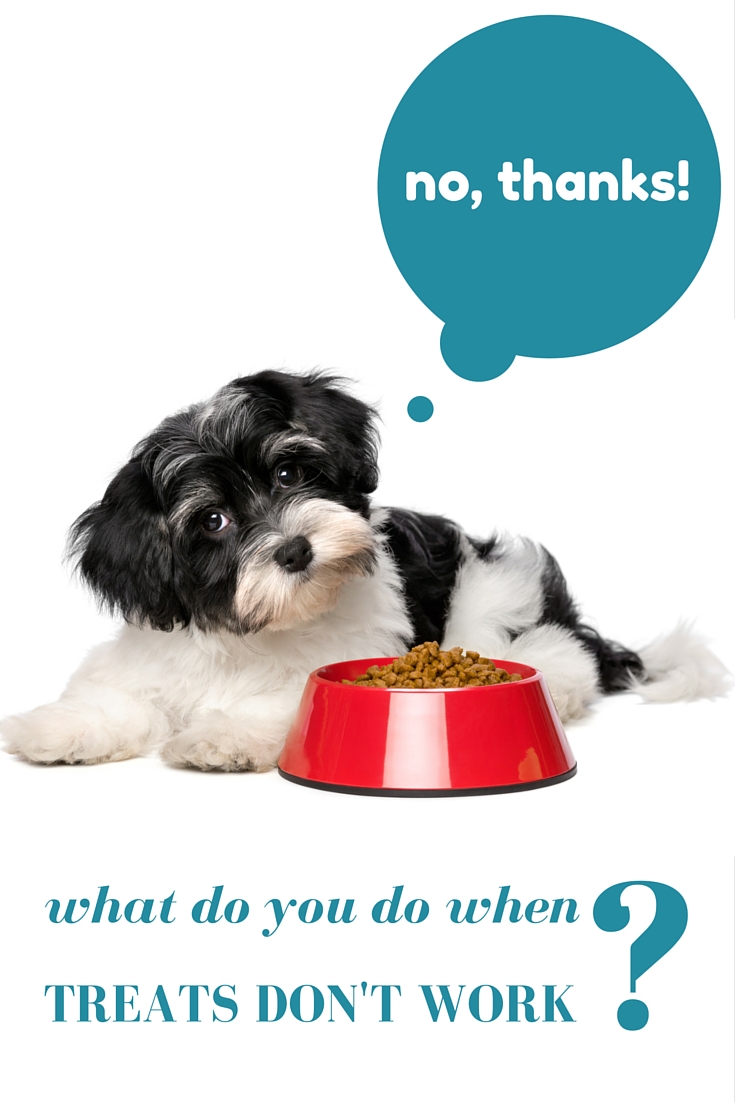
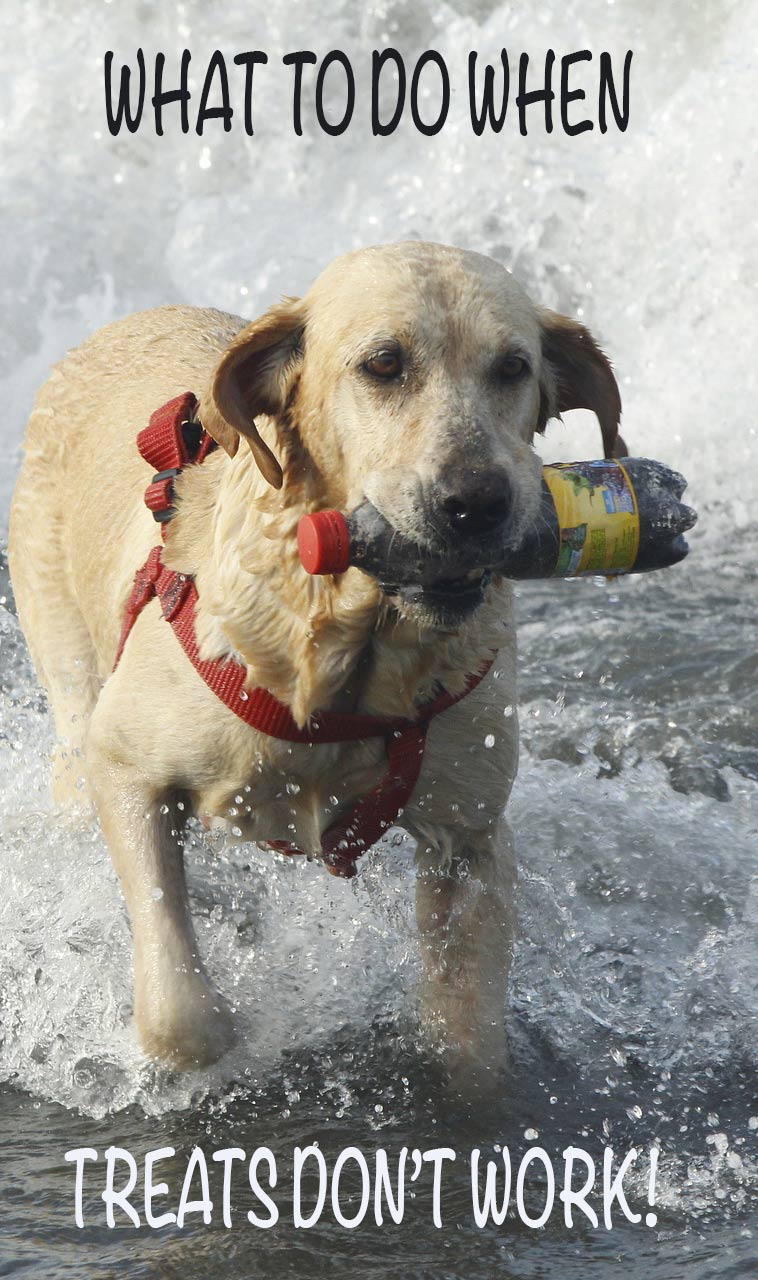
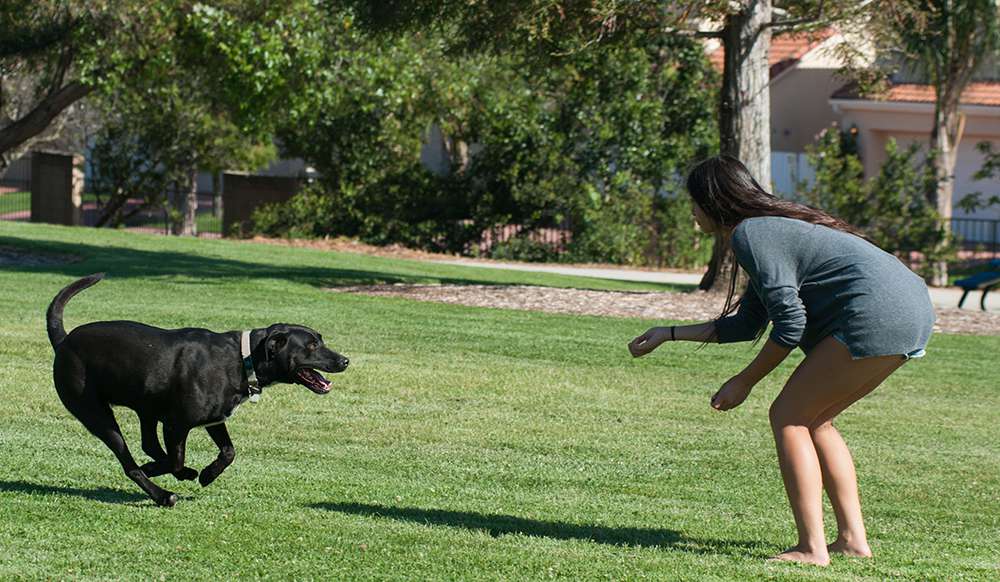

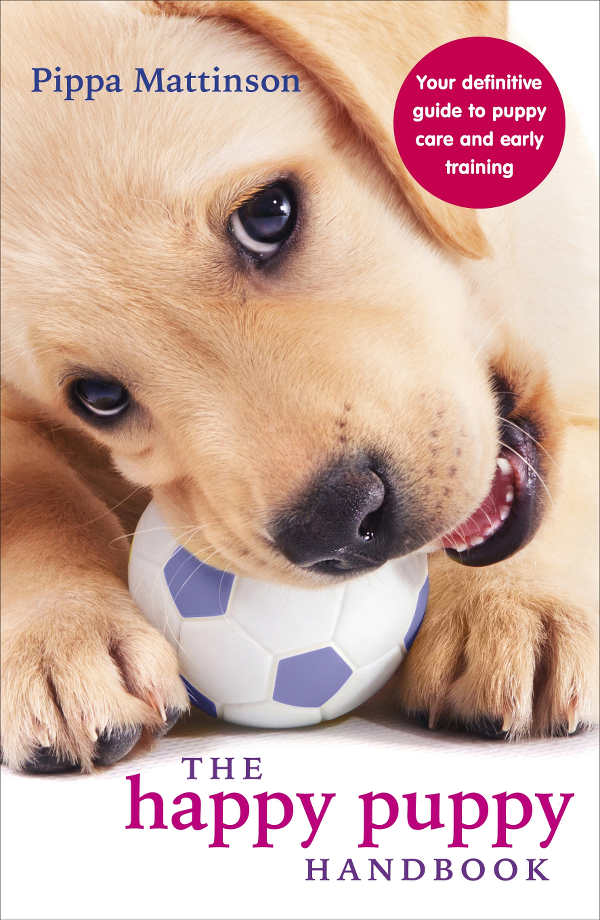
Courtney Cavaliere says
So, after this long article, where are the suggestions about how to train WITHOUT treats and “what to do”.?
Cynthia Simpson says
I agree with Courtney. I understand positivity, but you truly did not answer the question. My dog is not food oriented. He likes it when I rub his belly which I do when he responds immediately to any command, but that is not enough. If it is a choice between chasing a squirrel or dog, he totally ignores me. I constantly am walking him and he is always on a leash. I can control him that way. Training a puppy is easy. I have done it before. I got a 2 year old rescue from the South. I have no idea what happened to him before I got him. I am consistent, but please answer the question. Thanks.
Kelvin Tuttle says
As above no mention of what to do when your dog isn’t interested in treats. I have purchased a few of your books all of which are great but all mention food or a toy/fetch for a treat for training but my 3 year old cocker really isn’t interested in either just other dogs and running through undergrowth! And I’m struggling with distractions with but hes well trained indoors or in the garden. I dont understand how to train him around distractions when that’s all hes interested in!!
donna goodsmith says
our lab was from a home she had lived in more than eight years. she won’t stop humping and jumping. she wiggles so hard when you try to pet her that she ends up huting us. she doesn’t play with toys or eat treats. she’s good when we go for a walk or to the woods to run, but at home she is crazy. the vet can’t find anything wrong. she will be 10 in september and we just don’t see her slowing down. i feel the neighbors asked me to take her because she is out of control instead of their reason that they no longer had time for her.
Elizabeth says
I have tried it, firstly with puppy training and she didn’t improve at all. She is not interested in treats and goes crazy over other dogs. My partner took her to adult positive training with treats and she was so out of control he left early. She is now 9 months and we haven’t done any trainig. I don’t want to punish her with other training but now she is out of control and wonder if it would be better than nothing as she is a very strong Staffy!
Jim S says
This is the single best dog training article for my situation that I have found. I’m training a tiny Yorkie puppy who has NO interest in food rewards (and I’ve tried everything).
Understanding that positive reinforcement training is still possible without food rewards is encouraging me to work harder on rewards she does like such as toys and praise. As I continue with her training, I’ll be more focused on looking for other ways to provide effective positive reinforcement during her training sessions. Thanks!
Elizabeth Morgan says
We ave tried all of the above suggestions and more with our 2 year old Newfoundland who runs to other people or dogs when we are out. Very social but terrifying for other people. Have to keep her on a halti although she has been known to drag us with her. she is very strong willed. We have tried lots of trainers and are now at a loss of what to do next.
Nicole says
So helpfu! I hired a very reputable dog trainer to help me with my Husky. She told me to spray her w water when she got mouthy. This only made my dog growl and become aggressive (not her nature at all). I realized I was damaging our bond. I started putting essential oils on my hand and she quickly makes the choice on her own to chew on her toys not my arms.
I take her on walks every night and to the park. Our bond is so strong now.
I realized I was totally using food as a lure. When we pass a house with aggressive dogs, she freezes. Or tries to pull away trying to get out of her harness. Stressful and unsafe for us both. I will amp up the clicker training which she loves to include more distractions. So helpful to understand what needed to be changed!!
Miss Cellany says
When my dog (gsd mix) won’t recall and is playing with another dog or off sniffing something and there’s no danger to her remaining off leash, I simply turn around and walk away. When I get far enough from her (and she realizes I’ve left her) she quickly drops everything and runs after me. She gets praised for coming back even though I had to coerce it by leaving.
Her emergency recall usually works when she’s chasing a rabbit or bird, and if not, when she’s gone far away enough and realizes I’m too far away she leaves it and returns.
She’ll never go more than about 50 – 100 m from me no matter how distracted (depending on line of sight / cover). And usually when we’re walking she’s within 10 – 20 m of me. Very different to my border collie who was happy to run off 500 m or more (though he always returned).
Caroline says
I’m training my field bred lab using positive only methods and it’s working! She’s 18 mths and she’s so happy, confident, sticks to me like glue and a joy to take anywhere! Hope to pick up this season which will be a first for both of us…..
Scott Jenkins says
Our two dogs are quite different when it comes to rewards. Sanne is very food driven and expects a treat, especially if it’s close to meal time.
Sophie on the other hand, while she likes treats, is just as happy with some emphatic scratches behind the ears and an excited “What a good girl you are!”